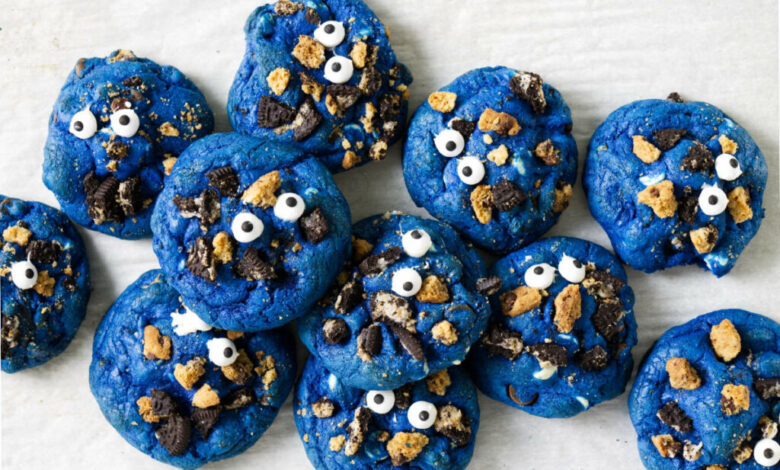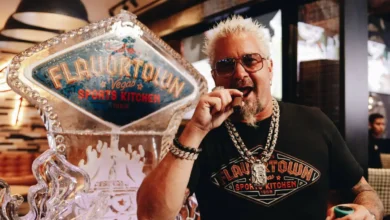Cookie Monster: Beyond the Crumbs and Blue Fur

Introduction: The Blue Legend of Sesame Street
Few characters in the vast realm of television have left an imprint as enduring and delightful as Cookie Monster, the wide-eyed, blue-furred icon from Sesame Street. Since his debut in the late 1960s, this voracious cookie enthusiast has transcended generations, languages, and cultures — becoming not just a children’s TV character, but a global symbol of joy, humor, and unfiltered honesty.
At first glance, Cookie Monster seems simple — a creature obsessed with cookies, known for his thunderous catchphrase, “Me want cookie!” But beneath the crumbs and comic chaos lies a surprisingly profound character study. He embodies innocence, self-control (or the lack of it), learning, and even an exaggerated reflection of human desire. He reminds us that sometimes, giving in to our whims — or learning from them — is part of being human.
In an age where characters often fade as fast as viral memes, Cookie Monster remains relevant. His charm lies in his authenticity. He is flawed, funny, and wholeheartedly himself. That blue fluff hides more wisdom than we give him credit for — and exploring it reveals why he remains a cultural mainstay decades after his first “Om nom nom nom.”
The Birth of Cookie Monster: A Monster with a Mission

Cookie Monster wasn’t always the snack-devouring star we know today. Created by Jim Henson, the brilliant puppeteer behind the Muppets, Cookie Monster made his first appearance in 1966 in a commercial for General Foods. Originally designed to advertise snacks, he was known as “The Wheel-Stealer Monster” — a furry creature who devoured everything in sight. When Henson joined forces with Sesame Street, the monster’s love for cookies became his defining trait, and the rest is delicious history.
What’s fascinating about Cookie Monster’s creation is how deliberately he was crafted to teach children about self-control and moderation. His exaggerated cookie obsession wasn’t merely comic; it was educational. Every time he lost control and ate too many cookies, children laughed — but also learned about the importance of restraint. Sesame Workshop’s creative genius lay in transforming a gluttonous monster into a relatable mirror for young audiences, teaching through humor rather than lectures.
Another interesting aspect is his evolving diet. In later years, the character was slightly reimagined to promote healthy eating habits — even declaring that “cookies are a sometimes food.” Some fans resisted this shift, believing Cookie Monster should stay true to his name. Yet, the change represented something meaningful: a modern adaptation of an old friend. It showed that even the most iconic characters could evolve without losing their essence.
Cookie Monster’s transformation from a chaotic snack-eater to a symbol of balance reflects a timeless truth — even monsters can grow. His journey mirrors our own human attempts to find equilibrium between indulgence and discipline, joy and responsibility.
Monster of Many Meanings: Symbolism Hidden in the Crumbs
At first glance, Cookie Monster’s only goal seems to be eating cookies — as many as he can, as fast as possible. But beneath the humor lies symbolism that has fascinated educators, psychologists, and pop culture enthusiasts alike. Cookie Monster represents desire in its purest form — the unfiltered yearning for something delightful, tangible, and satisfying. He is the personification of our cravings, both innocent and overwhelming.
In psychological terms, Cookie Monster is an allegory of the id, Freud’s concept of instinctual impulses. He doesn’t plan, he doesn’t calculate — he simply wants. Watching him, we see the part of ourselves that struggles to resist temptation. Whether it’s cookies, success, or love, Cookie Monster embodies the universal human experience of wanting something — sometimes too much.
Yet, his lack of restraint is also endearing. It teaches children (and adults) that imperfection is not a flaw but a part of growth. Cookie Monster’s constant attempts to learn manners, share cookies, and even control his impulses represent the journey toward emotional maturity. He never gets it perfectly right — but he always tries. That persistence, wrapped in chaos and comedy, makes him deeply human, despite his blue fur and googly eyes.
Beyond psychology, Cookie Monster also serves as a cultural mirror. His unapologetic enthusiasm for cookies contrasts with modern culture’s obsession with restraint and image control. In an age of curated perfection, Cookie Monster’s messy authenticity feels revolutionary. He doesn’t hide his flaws or pretend to be something he’s not. He is, quite literally, the embodiment of “what you see is what you get.”
The Global Appeal: Why the World Still Loves Cookie Monster
One of the most fascinating aspects of Cookie Monster is his global resonance. From the bustling streets of New York to the small villages of Pakistan, Japan, and South Africa, audiences recognize that unmistakable blue face. His language may differ, but his message — joy, appetite, and laughter — is universal.
What makes him so universally adored is his emotional transparency. Children and adults alike are drawn to his honesty. He doesn’t pretend to be refined or wise. He loves cookies, he loses control, he tries again. That simplicity, wrapped in humor, cuts across cultural barriers. Whether he’s munching on “galletas” in the Spanish-language version of Sesame Street (Plaza Sésamo) or singing about sharing in Arabic, Cookie Monster’s personality remains intact — raw, funny, and kind-hearted.
Another factor in his global success is his voice and mannerisms. Performed originally by Frank Oz, the same genius behind Miss Piggy and Yoda, Cookie Monster’s gravelly tone and enthusiastic gestures became instantly iconic. The rhythm of his speech — full of broken grammar and primal excitement — is not just comedic; it’s musical. His famous lines, such as “Me eat cookie!” or “Me love cookies!” became pop culture mantras, quoted and remixed in countless ways.
Moreover, Cookie Monster’s influence extends beyond children’s entertainment. He has appeared on late-night talk shows, news programs, and social media campaigns. From performing alongside John Oliver to parodying pop songs, he adapts effortlessly to each era — never losing the charm that made him a legend.
Cookies, Culture, and Compassion: The Lessons Hidden in Laughter
Behind every “Om nom nom” lies a lesson. Cookie Monster’s legacy is not just built on comedy but on values — sharing, patience, kindness, and acceptance. Despite his obsession, he often ends up sharing his cookies, learning that joy multiplies when shared. His interactions with friends like Elmo, Grover, and Big Bird emphasize empathy over indulgence.
Interestingly, Cookie Monster’s brand of humor is non-cynical. Unlike many modern characters designed for ironic adults, Cookie Monster is pure-hearted. His humor doesn’t rely on sarcasm or cruelty; it’s rooted in innocence and physical comedy. This rare quality gives him cross-generational appeal — grandparents laugh at his antics just as much as toddlers do.
He also represents the idea of embracing imperfection. He doesn’t pronounce words perfectly, he’s perpetually messy, and he rarely achieves moderation — yet he’s loved for it. In a world obsessed with perfection, Cookie Monster teaches that being yourself — fully and fearlessly — is the real goal. His message is disarmingly simple: joy is found not in being flawless, but in being authentic.
In this way, Cookie Monster becomes more than a TV character; he’s a philosophy wrapped in blue fur. He teaches that desire is natural, laughter is healing, and sharing is strength. Whether munching cookies or making mistakes, he embodies a kind of chaotic wisdom — the wisdom of the heart.
Conclusion: More Than Just a Monster
Cookie Monster’s lasting impact lies in his ability to balance chaos with kindness, humor with heart, and indulgence with insight. He began as a simple puppet designed to entertain, but over the decades, he’s evolved into a symbol of authenticity, curiosity, and emotional learning.
His cookie crumbs trail through generations, reminding us that laughter and learning go hand in hand. Children see him as a friend, adults see him as nostalgia, and psychologists see him as an archetype of human impulse. But everyone — regardless of age — sees him as lovable.
In a world filled with constant pressure to be perfect, controlled, and polished, Cookie Monster’s unfiltered joy offers something radical: permission to be real. He reminds us that sometimes it’s okay to make a mess, to crave, to laugh at ourselves, and to share what we love — even if it’s just a cookie.
So, the next time you hear that gravelly voice cry out, “Me want cookie!”, remember — it’s not just a monster talking. It’s a reminder that a little sweetness, shared with honesty and laughter, can make even the messiest moments meaningful.
